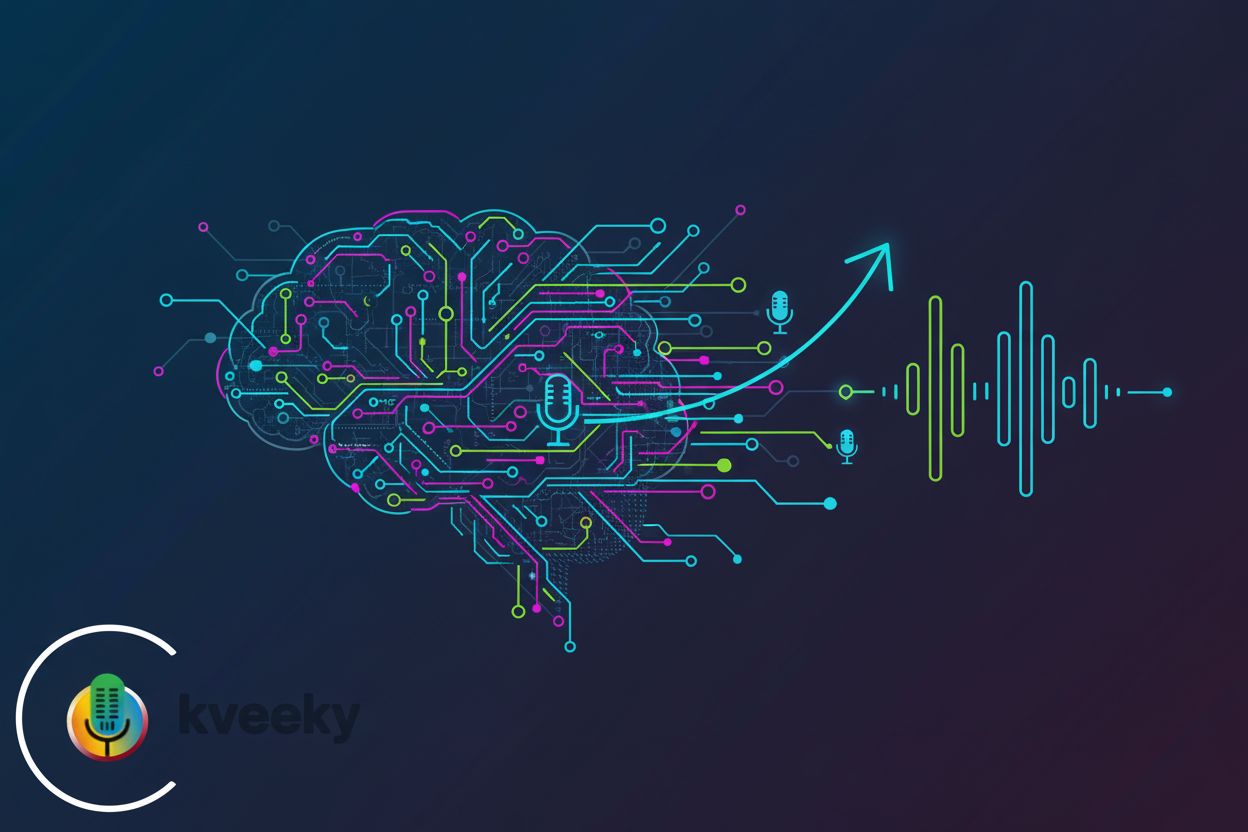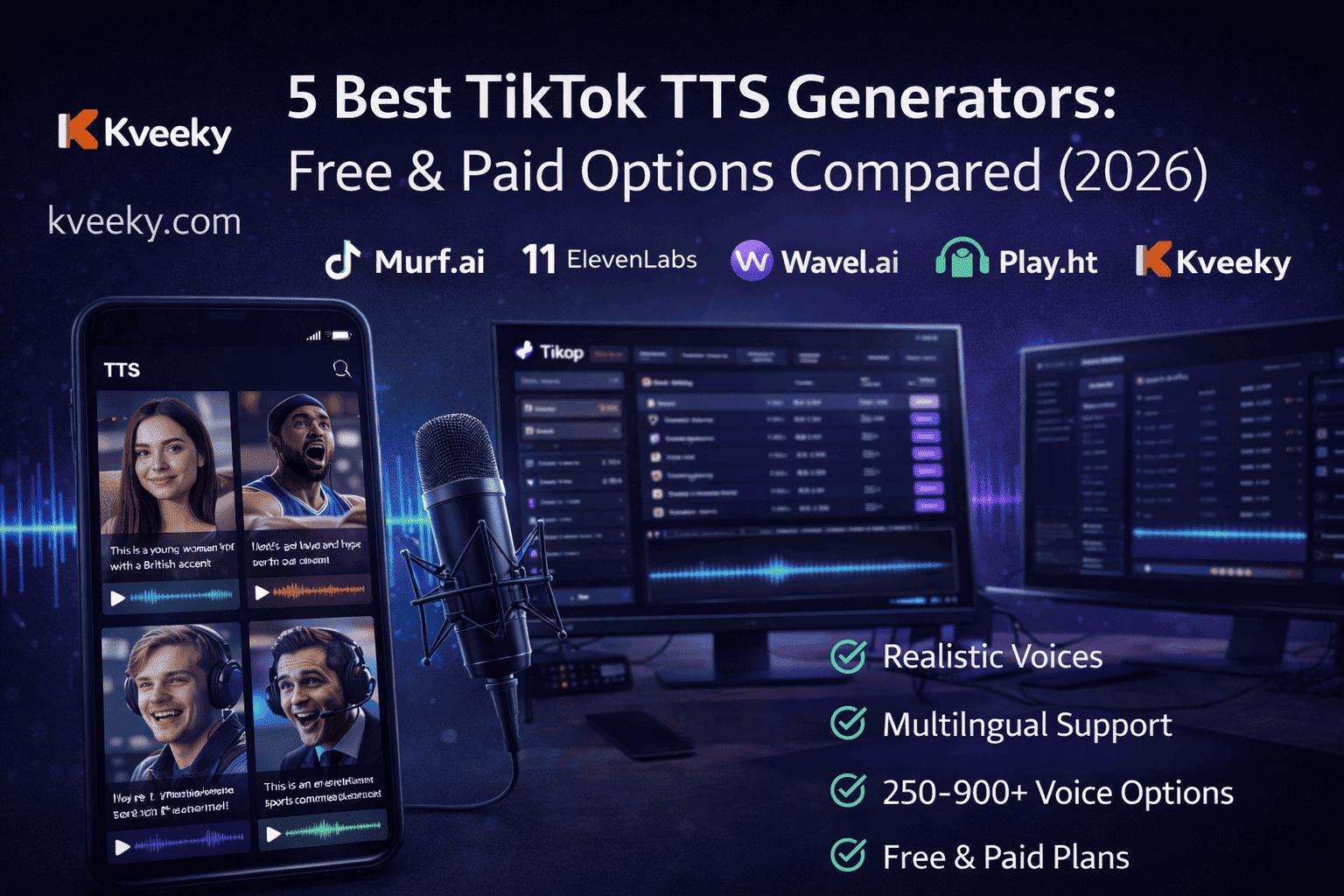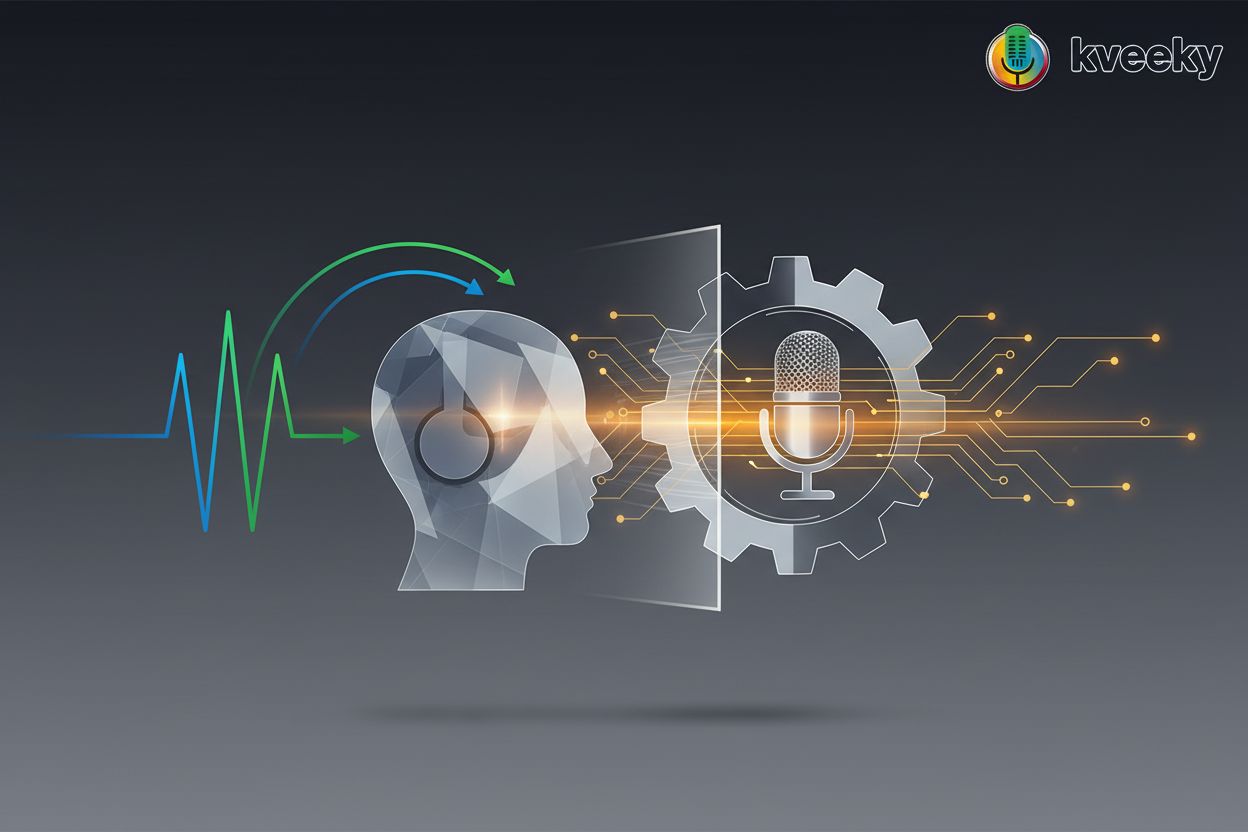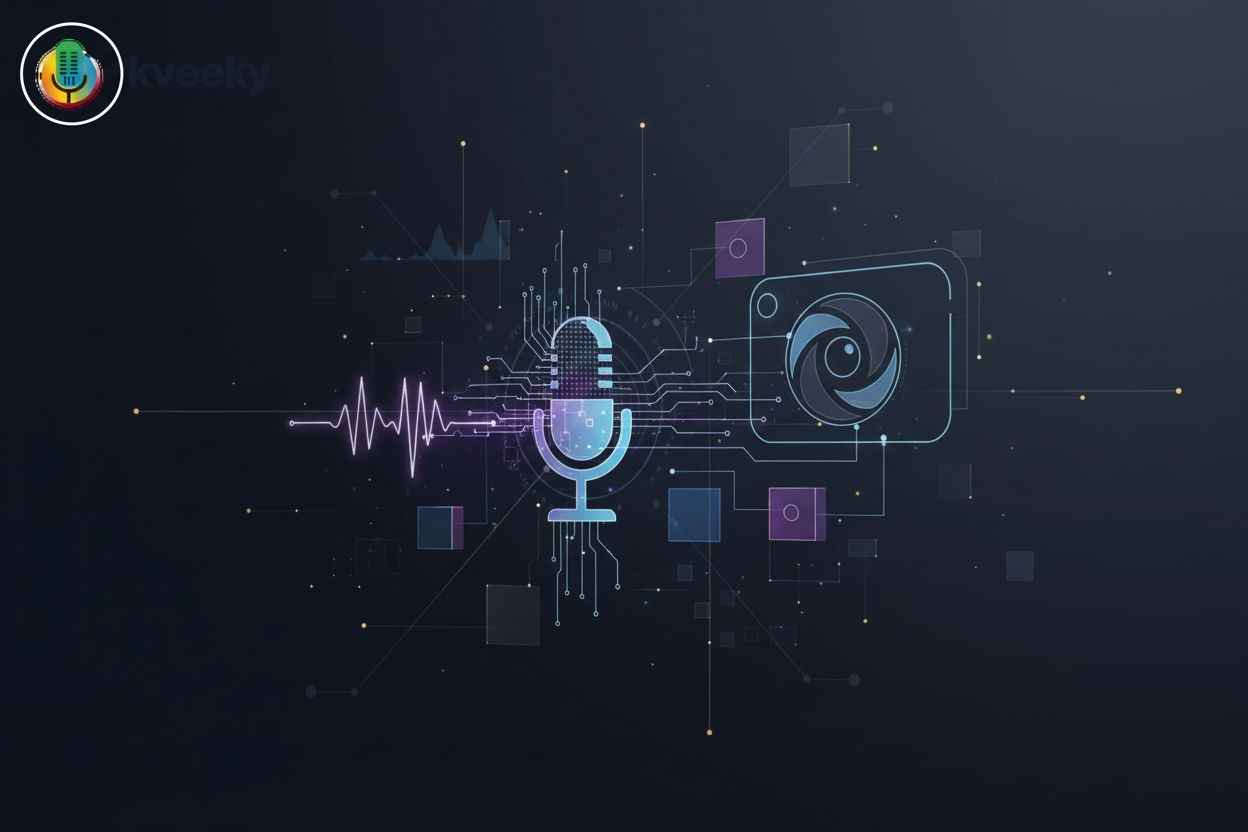Unlocking Emotion: Mastering Voice Emotion Control in AI Voiceovers
Introduction: The Rise of Emotional AI Voiceovers
Imagine a world where ai voices don't just speak, they feel. The ability to imbue ai voiceovers with genuine emotion is rapidly changing how we connect with audio content.
Text-to-speech (tts) technology has come a long way. Early tts systems were often criticized for their monotone and robotic delivery. However, the integration of artificial intelligence and machine learning has dramatically improved tts quality, leading to more natural-sounding voices. This evolution is crucial for creating engaging and effective audio content.
Emotional connection is paramount in content consumption, especially in video and e-learning. Emotional voiceovers can significantly enhance audience engagement and improve information retention. (Mastering Voice Emotion Control in AI Voiceovers - Kveeky) For example, a documentary using a somber tone during a poignant scene evokes empathy, while an upbeat, enthusiastic voice in a commercial can drive sales.
Voice emotion control in tts represents a significant leap forward. It allows for fine-tuning the emotional tone of ai-generated speech, opening new possibilities for content creators. This technology enables the creation of ai voices that can express a wide range of emotions, from happiness and excitement to sadness and anger. EmotiVoice, an open-source tts engine, offers emotional synthesis with over 2000 voices.
With voice emotion control, the possibilities are endless. Speech to Speech (sts) lets you turn the recording of one voice to sound as if spoken by another and control the emotions, tone, and pronunciation beyond what's possible with tts prompts alone. This means you can take an existing recording and transform it, not just in terms of voice, but also in how it feels.
Now that we've touched on the exciting potential, let's dive into the mechanics of voice emotion control and explore how it works.
How Voice Emotion Control Works: The Technology Behind the Magic
Did you know ai can now convincingly whisper sweet nothings or shout commands with fiery rage? Voice emotion control is rapidly evolving, making ai voiceovers more dynamic and relatable than ever before. Let's explore the technology that makes this possible.
At the heart of voice emotion control lie sophisticated ai models, primarily leveraging deep learning and neural networks. These models are trained on vast datasets of speech samples, each labeled with specific emotions.
- The models learn to recognize patterns and acoustic features associated with different emotions, such as changes in pitch, intonation, speaking rate, and energy levels.
- For example, a happy voice might exhibit a higher pitch and faster tempo, while a sad voice might be characterized by a lower pitch and slower tempo.
- Datasets play a crucial role, with high-quality emotional speech samples being essential for training ai models to generate nuanced and realistic emotional expressions.
The key to unlocking the emotional potential of ai voiceovers often lies in prompt engineering. This involves crafting text prompts that guide the ai to generate speech with the desired emotion.
- By strategically using keywords and phrases, content creators can influence the ai's emotional output.
- For instance, using words like "amazing" or "fantastic" can encourage a more enthusiastic tone, while phrases like "I'm so sorry" can elicit a more empathetic response.
- Here are a few examples:
- Happiness: "I'm thrilled to announce..." (expect an upbeat, energetic tone)
- Sadness: "Unfortunately, we must inform you..." (expect a slower, more somber delivery)
- Anger: "I am extremely disappointed in..." (expect a forceful, perhaps louder tone)
Beyond simply selecting an emotion, many ai voiceover tools allow for fine-tuning the intensity or strength of that emotion. This level of control is crucial for achieving the right balance and avoiding over-the-top or unnatural deliveries.
- Parameters or sliders are often used to adjust emotional levels, allowing users to specify how intensely an emotion should be expressed.
- Balancing emotional expression with naturalness and clarity is essential. Too much emotion can sound artificial or distracting, while too little may not effectively convey the intended message.
- The goal is to create an ai voiceover that sounds authentic and engaging, enhancing the listener's experience without being overwhelming.
Now that we've explored the technology behind voice emotion control, let's examine how it's being used across various industries.
Applications of Voice Emotion Control: Where to Use It
Want to make your video game characters feel truly alive or create e-learning modules that resonate with students? Voice emotion control is the key. Let's explore where this technology can make the biggest impact.
Emotional voiceovers can significantly enhance character development and narrative impact. Imagine a stoic warrior's voice filled with subtle sadness as they recount a lost battle, or a villain's menacing tone laced with amusement. These nuances add depth that simple dialogue can't convey.
Using different voices and emotions to portray different characters allows for clear distinction and personality. A children's animated series, for instance, could feature a playful, high-pitched voice for the protagonist and a grumpy, low-pitched voice for the antagonist.
Voice emotion control creates immersive and engaging storytelling experiences for viewers. Documentaries, films, and even explainer videos can benefit from emotional voiceovers that draw the audience in and keep them invested in the narrative.
Emotional voiceovers in e-learning modules can significantly improve knowledge retention. By using an enthusiastic tone when explaining key concepts or an empathetic voice when discussing sensitive topics, educators can create a more impactful learning experience.
- For example, a history lesson on a pivotal moment could use a tone of awe and wonder to convey its significance, making it more memorable.
- When covering a challenging math problem, a patient and encouraging tone can help reduce learner frustration and foster a sense of accomplishment.
Using empathy and enthusiasm to motivate learners helps to foster a more positive and engaging learning environment. Consider a language learning app using an encouraging tone to praise progress or a supportive voice to guide users through challenging exercises.
- A learner struggling with a new vocabulary word might hear a gentle, reassuring voice saying, "You're doing great, keep trying!"
- When a student successfully completes a module, an enthusiastic "Fantastic job!" can provide a real boost.
Emotional ai allows for personalized and engaging learning experiences. Imagine ai tutors that adapt their tone based on the student's learning style and emotional state, providing tailored support and encouragement.
Emotional voiceovers can evoke specific feelings and drive consumer behavior. A car commercial might use an adventurous and exciting tone to appeal to thrill-seekers, while a financial services ad could use a trustworthy and reassuring voice to build confidence.
- For a travel company, an adventurous and upbeat tone in an ad for a new destination can inspire wanderlust and encourage bookings.
- For a cybersecurity service, a calm, confident, and reassuring voice can build trust and make potential clients feel secure.
Different emotions can effectively target different audiences, tailoring the message for maximum impact. A cosmetics brand might use a confident and glamorous voice to attract younger consumers, while a healthcare product could use a comforting and compassionate tone to appeal to older demographics.
Voice emotion control can help create memorable and impactful marketing campaigns. By using unique and emotionally resonant voiceovers, brands can stand out from the competition and leave a lasting impression on potential customers.
As we've seen, voice emotion control has diverse applications across various industries. Now that we've seen where to use it, let's look at some tools and platforms to get you started.
Tools and Platforms: Getting Started with Emotional TTS
Ready to add some emotion to your ai voiceovers? Let's explore the tools and platforms that can help you get started with emotional text-to-speech (tts).
Looking for an all-in-one solution? Kveeky is a great place to start.
- Kveeky's ai scriptwriting services streamline the creative process, helping you craft compelling narratives that resonate with your audience.
- You can access a diverse library of ai voices, available in multiple languages, to suit any project.
- It is easy to customize voice options to match your brand's unique identity and style.
- Kveeky allows you to generate high-quality text-to-speech voiceovers with ease.
- The user-friendly interface simplifies script and voice selection, making the entire process intuitive.
- Best of all, you can enjoy a free trial with no credit card required to experience Kveeky's capabilities firsthand.
Beyond Kveeky, several other platforms offer emotion control features. Each has its strengths, so consider what best fits your project needs.
- ElevenLabs: Known for its highly realistic voices and advanced emotion control, ElevenLabs offers robust features for fine-tuning speech. They also support speech-to-speech transformations.
- Murf.ai: This platform provides a wide range of voices with various emotional styles and offers tools for voice cloning and fine-tuning.
- Play.ht: Play.ht offers a good selection of voices with emotional capabilities and integrates well with various content management systems.
- Resemble AI: Specializing in voice cloning and highly customizable emotional delivery, Resemble AI is a powerful option for unique voice projects.
When comparing platforms, consider factors like pricing, voice quality, language support, and the range of emotions available.
Selecting the right voice and emotion is crucial for creating effective ai voiceovers. It's about finding the perfect match for your content and audience.
- Consider the tone and style of your content. For example, a serious documentary might require a calm and authoritative voice, while a children's story would benefit from a playful and expressive one.
- Think about your target audience. What kind of voice and emotional tone will resonate with them the most?
- Don't be afraid to experiment with different voices and emotions to see what works best. Testing is key to finding the perfect fit.
Now that you know where to start, let's dive into best practices for achieving optimal results with voice emotion control.
Best Practices for Voice Emotion Control: Tips and Tricks
Want to ensure your ai voiceovers truly hit the mark? Mastering voice emotion control requires a blend of technical know-how and creative finesse. Here are some best practices to help you create compelling and emotionally resonant audio content.
The foundation of any great voiceover, emotional or otherwise, is a well-written script. A clear, concise, and descriptive script provides the ai with the necessary context to deliver the desired emotion effectively.
- Use descriptive language and emotional cues within the script to guide the ai. For instance, instead of simply writing "I'm happy," try "I'm absolutely ecstatic, my heart is soaring!" The more detail, the better.
- Avoid ambiguity in your writing. Ensure that the intended emotion is clear and that there's no room for misinterpretation by the ai.
Don't be afraid to play around with different emotions and their intensities. The key is to find the perfect balance that aligns with your content and resonates with your audience.
- Try out various emotional tones and intensities to see what works best. A slight adjustment in intensity can make a significant difference in the overall impact.
- Consider using A/B testing to compare different voiceover options. This allows you to gather data on which emotional delivery is most effective.
- Gather feedback from others to refine your emotional delivery. Fresh ears can often provide valuable insights and help you fine-tune your approach.
Even with the right emotion, inaccurate pronunciation or unnatural intonation can undermine the believability of your ai voiceover. Paying close attention to these details is crucial for a polished final product.
- Ensure accurate pronunciation and natural intonation for believable emotional expression. Ai tools are improving, but they may still stumble on certain words or phrases.
- Use pronunciation dictionaries and SSML tags to fine-tune speech. SSML (Speech Synthesis Markup Language) is a markup language that allows you to control aspects of speech synthesis, like pronunciation, pauses, and emphasis. For example, you might use
<emphasis level="strong">important</emphasis>to stress a word, or<phoneme alphabet="ipa" ph="tʃaɪld">child</phoneme>to specify an exact pronunciation. - Listen carefully to the ai's output and make adjustments as needed. Iteration is key to achieving a natural and engaging result.
By following these best practices, you can harness the power of voice emotion control to create ai voiceovers that captivate and resonate with your audience. Next up, we'll explore what to watch out for with challenges and limitations.
Challenges and Limitations: What to Watch Out For
Emotional ai voiceovers aren't perfect; like any technology, they come with limitations. Being aware of these challenges will help you use emotional ai more effectively.
One of the biggest hurdles is preventing ai voices from sounding robotic or unnatural. Early tts systems were notorious for their monotone delivery, and even with advancements in ai, achieving true human-like expressiveness remains a challenge.
To combat this, focus on fine-tuning parameters like pitch, intonation, and speaking rate. Subtle variations can make a significant difference in perceived naturalness.
Post-processing tools can also enhance audio quality. Techniques such as adding slight reverb or adjusting equalization can smooth out any remaining artificiality.
Accurately conveying specific emotions is paramount. However, ai might misinterpret cues or deliver emotions inappropriately, leading to awkward or even offensive results.
Careful prompt engineering is crucial here. Use clear and unambiguous language to guide the ai's emotional output.
Thorough testing and refinement are essential to ensure the emotional delivery aligns with the content and context, avoiding unintended implications.
Expressing complex or nuanced emotions remains a significant challenge. Current ai technology often struggles with subtleties like sarcasm, irony, or bittersweetness.
For example, an ai might deliver a sarcastic comment with genuine enthusiasm, completely missing the intended irony. Or, it might struggle to convey the mixed feelings of bittersweet nostalgia, sounding either purely sad or purely happy.
Exploring advanced techniques for conveying subtle emotional cues may involve combining multiple emotions or using more descriptive prompts that explicitly state the desired nuance.
Staying up-to-date with the latest advancements in emotional tts is essential. As the technology evolves, ai will become better at capturing and conveying these intricate emotional states.
While emotional ai voiceovers offer incredible potential, understanding their limitations is key to using them effectively. In our final section, we'll look at the future of voice emotion control and what exciting developments lie ahead.
The Future of Voice Emotion Control: What's Next?
The world of ai voice emotion control is rapidly evolving, promising increasingly realistic and personalized audio experiences. What groundbreaking advancements can we expect to see in the near future?
Ai's ongoing evolution is set to revolutionize emotional tts.
- Expect to see more realistic and nuanced emotional expression as ai models become more sophisticated. This will involve improvements in capturing subtle emotional cues and delivering them authentically.
- New ai models and techniques are constantly being explored. These advancements could lead to more expressive and versatile ai voices, capable of conveying a wider range of emotions with greater accuracy.
- Voice cloning is also improving. As EmotiVoice notes, they provide voice cloning with your personal data, allowing for highly personalized and emotionally rich voice generation. This means ai can not only mimic a voice but also imbue it with specific feelings.
Imagine ai voiceovers that adapt to each listener's unique preferences and emotional state.
- The possibility of creating personalized voiceovers tailored to individual users is becoming more realistic. This could involve analyzing user data to determine the optimal emotional tone for maximum engagement.
- Ai could adapt emotional delivery based on user feedback, creating more engaging and interactive voiceover experiences. For example, if a user responds positively to an encouraging tone, the ai could adjust its delivery accordingly.
- This technology can be used to create personalized audiobooks that adapt to the listener's mood.
As emotional ai becomes more powerful, it's crucial to consider the ethical implications.
- We must ensure transparency and avoid manipulation when using ai to generate emotional content. Users should be aware that they are interacting with an ai and not be misled into believing it is a human.
- Promoting responsible and ethical use of voice emotion control technology is essential. This includes addressing potential concerns like data privacy, algorithmic bias, and emotional manipulation.
- It's important to develop guidelines and best practices to ensure that emotional ai is used in a way that benefits society as a whole.
The future of voice emotion control is bright, with exciting advancements on the horizon. By embracing these innovations responsibly, we can unlock new possibilities for creating engaging and impactful audio experiences.







